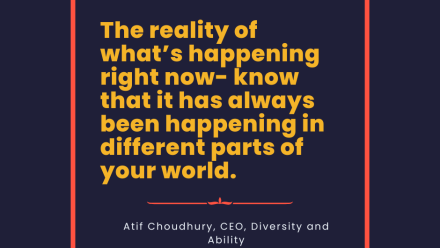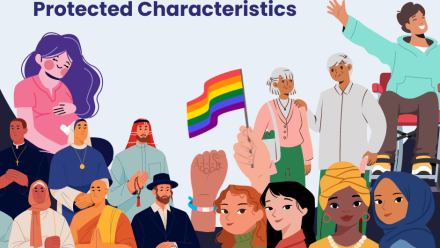The multi-million pound value of social enterprises tackling the Disability Employment Gap
21st June 2021 by Raphaele von Koettlitz
Compelling evidence shows social enterprises create substantial social and economic value and play a major role in closing the disability employment gap
D&A took part in a groundbreaking study led by Unltd and The New Economics Foundation (NEF) exploring the impact of social enterprises tackling the Disability Employment Gap. The team conducted a social cost-benefit analysis to better understand the impact of D&A’s work supporting disabled students in higher education. One of the main focuses of the study was to analyse how enabling support at university improves disabled student’s long-term participation in the workforce post-graduation.
Spoiler alert… for every £1 spent on our services, £16.55 worth of social value is created. That’s £9.48 million per year!
We’ll let that sit with you for a moment.
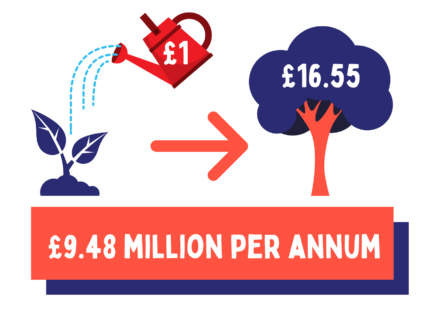
D&A’s social return on investment
Why is this important?
As it stands disabled people are 28.8% less likely to be in employment than non-disabled people and earn a fifth (20%) less than non-disabled workers. Disabled women face the biggest pay gap, being paid on average 36% less than non-disabled men.
The coronavirus pandemic has only deepened these inequalities; the proportion of disabled people who are either unemployed or economically inactive rose from 45.9% to 47.7% in the year October 2020 -December 2021.
The 14.1million disabled people in the UK have so much to contribute to our workforces and economy, £274 billion per year to be precise, yet are often denied participation due to inaccessible practices, systems, attitudes and environments.
How do social enterprises help close the gap?
Through a range of different initiatives, from tailored one-to-one support to institution-wide training programmes, social enterprises across the UK support disabled people to find and stay in work.
The research identified a wide variety of positive outcomes for the beneficiaries of D&A’s services and the other participating social ventures. These include improvements to different aspects of personal wellbeing such as self-confidence, optimism, resilience, emotional wellbeing, reduced social isolation, as well as financial security, income, educational qualifications, physical health, substance misuse and offending. All of these have a direct link to government expenditure in terms of tax received, benefits paid and other forms of public spending.
In other words, investing in social enterprises is a high-value social return, delivering extremely good value to the taxpayer. The study shows that for every £1 spent on the 5 different social ventures in the study, £116 is created (a total of £19.9 million per year).
How does a Social Cost-Benefit Analysis work?
The various outcomes listed above were identified through Theory of Change modelling, which were used to develop data collection tools so that the impact of the social ventures could be quantified. The data collected from the beneficiaries about their experiences in turn fed into Social Cost-Benefit Analysis modelling. The research analysed the changes service-users experienced as a result of the support they received. These outcomes were then monetised using established financial proxies linked to different social impacts.
What is D&A’s impact?
D&A’s key social value impacts among students in higher education are centred around improved psychological wellbeing. This encompasses aspects such as higher levels of confidence, feelings of usefulness, independence, feeling connected to others and reduced levels of anxiety. Participants stated that their general emotional wellbeing improved by approximately 25% after benefitting from D&A’s services.
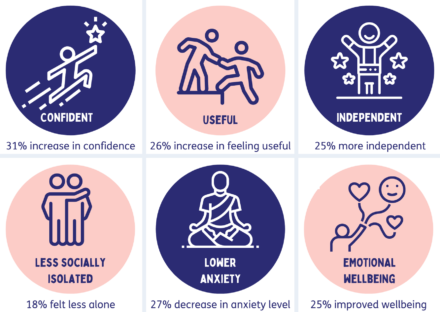
Key outcomes of the social cost-benefit analysis, showing impacts on D&A’s service users after receiving support
All of these outcomes have a long-term impact on the participation of disabled people in our society, both in the workplace and beyond. As proven in this research, social enterprises really do have the power to shift the disabling barriers currently encountered by so many.
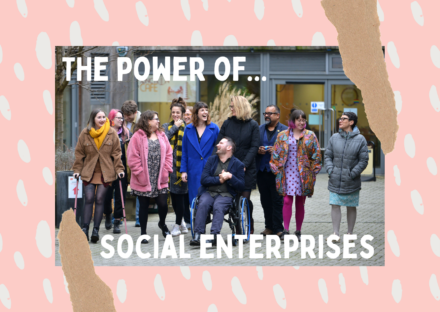
The D&A team
Want to find out more about the social cost-benefit analysis? Look no further!
